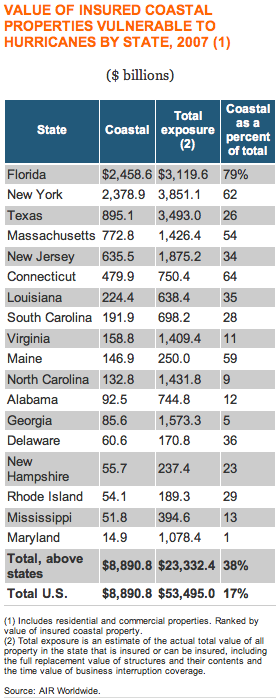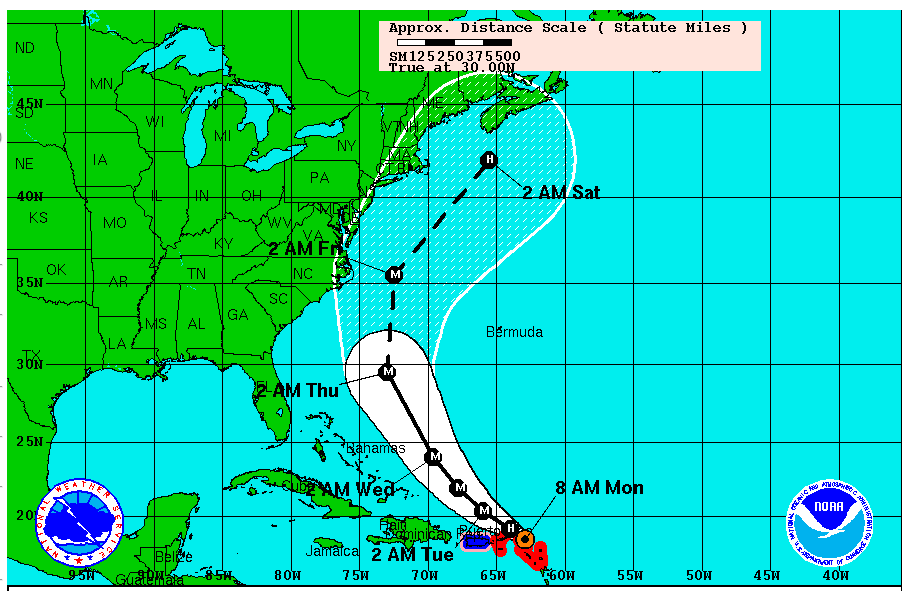
On August 29, 2005, the levees that were supposed to protect New Orleans failed catastrophically. The United States Army Corps of Engineers simply did not do the job it was tasked to do. As such, it was found liable for the flooding in court.
“It is the court’s opinion that the negligence of the Corps, in this instance by failing to maintain the MRGO properly, was not policy, but insouciance, myopia and short-sightedness,” U.S. District Court Judge Stanwood Duval Jr. wrote in his lengthy ruling, referring to the Mississippi River-Gulf Outlet canal.
“For over 40 years, the Corps was aware that the Reach II levee protecting Chalmette and the Lower Ninth Ward was going to be compromised by the continued deterioration of the MRGO … The Corps had an opportunity to take a myriad of actions to alleviate this deterioration or rehabilitate this deterioration and failed to do so. Clearly, the expression ‘talk is cheap’ applies here.”
Clearly, the man-made protection was not up to par. The storm surge that rushed inland was too great for it to restrain.
As many have noted in the past five years, however, there were other safeguards that historically protected New Orleans: coastal wetlands and barrier islands. But for decades, as National Geographic notes, these were allowed to erode away to the point that they could offer little resistance to the rising tides that ultimately breached the levees.
When Hurricane Katrina smacked the Gulf Coast in August 2005, the protection from powerful storm surges provided by coastal wetlands and barrier islands had gradually been whittled away. Since the 1930s, Louisiana had lost 1.2 million acres of coastal wetlands. More than two dozen dams and thousands of miles of levees on the Mississippi River had trapped sediment that otherwise would have replenished them. At the same time, wetlands were drained and filled to enable oil and commercial development in the Gulf region. Even as the Army Corps of Engineers failed to adequately maintain levees to keep the floodwaters at bay, this loss of natural protection worsened the catastrophe.
Of course, this is not an issue unique to New Orleans.
Across the globe, protective wetlands are disappearing. At the same time, coastal populations are expanding. The combination is deadly and means that wind storms and flooding that would have been less catastrophic to society just a few decades ago are now inherently capable of creating more damage more easily to more people. The NatGeo piece uses the current, historic flooding in Pakistan and the 2004 Indian Ocean tsunami as examples of major disasters that could have been less disastrous if the natural protective barriers had not been allowed to degrade so dramatically.
With some investment, however, scientists believe that such ecosystems can be restored and again provide protective benefits.
Just as we buy home insurance and life insurance to protect ourselves and our families from catastrophic losses, so society now needs to “buy” disaster insurance to reduce the damage caused by floods and other weather-related events. By strategically investing in the protection and restoration of ecological infrastructure, we can begin to re-gain the benefits of nature’s services.
Some nascent efforts in this direction have at least been floated. Within a month of the Asian tsunami, officials in Indonesia–where more than 126,000 of the tsunami deaths had occurred and where some 1.6 million acres of coastal mangroves had been lost in the preceding few decades–announced a large-scale effort to restore the nation’s mangrove defenses. In the aftermath of Katrina, U.S. scientists have been studying the idea of diverting Mississippi River water back toward Louisiana’s disappearing coastal swamps, to supply the nutrients and sediments needed to rebuild them.
Overall, however, the story is one of inertia, neglect and missed opportunity. After the Great Midwest Flood of 1993, U.S. researchers estimated that restoration of 13 million acres of wetlands in the upper portion of the Mississippi-Missouri watershed, at a cost of $2-3 billion, would have absorbed enough floodwater to have substantially reduced the $16 billion in flood damages from that event. But instead of calling floodplains and wetlands back into active duty, officials in the region permitted even more floodplain development. Nicholas Pinter of Southern Illinois University estimates that 28,000 new homes and 6,630 acres of commercial and industrial development have since sprung up on land that was under water in 1993.
I interviewed former FEMA head James Lee Witt in 2008 (following the Sichuan earthquake in China and Cyclone Nargis that hit Burma soon after), and he was a proponent using natural barriers as well. Here he highlights one of the initiatives he enacted along the riverbanks of the Red River after devastating flooding there in 1997 caused some $3.5 billion in damages.
We utilized the mitigation and buy-out relocation programs [after the flood]. Mayor Pat Owens in Grand Forks [North Dakota] and Mayor Lynn Stauss in East Grand Forks [Minnesota] took all that space and turned it into green, open-space parks. And the Army Corps of Engineers did a fantastic job on the levee work there. You should see that town now. It is a model of prevention.
Mayor Strauss in East Grand Forks took the area we bought out-which still had all the infrastructure, streets and huge trees right along the river-and turned that into an motor home park where people can camp in the summer. It turned into an absolutely beautiful city.
The lesson in all this is that prevention, both natural and man-made, must be prioritized by city planners. If there is a threat of flooding, particularly if the natural barriers that have historically protected the city are disappearing, the municipality must find a way to refortify its shorelines and riverbanks.
Unfortunately, those who propose anything with the words “restore” and “ecosystem” in the same sentence are often quickly dismissed as tree-huggers who are overly concerned with protecting wildlife. With city and state budgets stretched thin, that is not something many citizens can get behind. But it is not about saving the whales — it is about saving people.
And, ultimately, from a protection standpoint, man-made barriers can be just as good in many locations. In New Orleans, for example, they are nearing the completion of a new protection system.
Nearly five years after Katrina and the devastating failures of the levee system, New Orleans is well on its way to getting the protection system Congress ordered: a ring of 350 miles of linked levees, flood walls, gates and pumps that surrounds the city and should defend it against the kind of flooding that in any given year has a 1 percent chance of occurring.
The scale of the nearly $15 billion project, which is not due to be completed until the beginning of next year’s hurricane season, brings to mind an earlier age when the nation built huge works like the Brooklyn Bridge, the Hoover Dam and the Interstate highway system.
The city’s reinforced defenses are already stronger than they were before Katrina. But even after 2011, experts argue, they will still provide less protection than New Orleans needs to avoid serious flooding in massive storms.
This new system is not a Dutch-level engineering marvel that will hold back virtually anything short of Armageddon. You would think that the the death of so many New Orleans residents would have spurred the same “never again” mentality that the Dutch took after they lost 2,000 of their citizens to a flood in 1953 — not the creation of a 100-year protective system (meaning that those who construct it essentially expect it will likely fail within a century when an unusually strong, but not unthinkably strong, storm strikes).
But it is certainly a vast improvement over what existed in 2005.
Now, if we can just get other areas to see the importance of holding back floodwaters before they devastate the community, we will really be making some progress.



